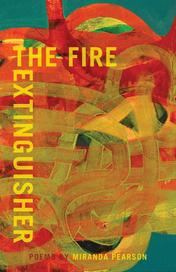Canadian

HAMMER
A hammer is rising. A hammer
thrown up at the end of the day by a carpenter
with blood on the handle where his blisters have been.
A hammer. It lifts as well on the wave of steam
pouring up from the pots of a kitchen - a tiny kitchen
of an apartment, and that of a restaurant
serving a hundred customers at once.
A great cry of tedium
erupting out of papers and fluorescent glass
carries the hammer higher. It goes up end over end
on a tune broadcast to a million people.
And it climbs
on the force of a man's arm alone
flung straight up from the sickness that is his life.
It rises out of the weight of a body falling.
Nothing can stop it. The hammer has risen for centuries
high as the eaves, over the town. In this age
it has climbed to the moon
but it does not cease rising everywhere each hour.
And no one can say what it will drive
if at last it comes down.
STUDENTS
The freshman class-fist printouts
showed birthdates so recent
Wayman was sure the computer was in error.
One young man, however, was curious
about Wayman's mention near the start of term
of his old college newspaper:
"You were an editor when? Wow,
that's before I was born."
The wisdom of the students
hadn't altered, though.
Wayman observed many clung to
The Vaccination Theory of Education
he remembered: once you have had a subject
you are immune
and never have to consider it again.
Other students continued to endorse
The Dipstick Theory of Education:
as with a car engine, where as long as the oil level
is above the add line
there is no need to put in more oil,
so if you receive a pass or higher
why put any more into learning?
At the front of the room, Wayman sweated
to reveal his alternative.
"Adopt The Kung Fu Theory of Education,"
he begged.
"Learning as self-defence. The more you understand
about what's occurring around you
the better prepared you are to deal with difficulties."
The students remained skeptical.
A young woman was a pioneer
of The Easy Listening Theory of Learning:
spending her hours in class
with her tape recorder earphones on,
silently enjoying a pleasanter world.
"Don't worry, I can hear you,"
she reassured Wayman
when after some days he was moved to inquire.
Finally, at term's end
Wayman inscribed after each now-familiar name on the list
the traditional single letter.
And whatever pedagogical approach
he or the students espoused,
Wayman knew this notation would be pored over
with more intensity than
anything else Wayman taught.

The Fed Anthology








